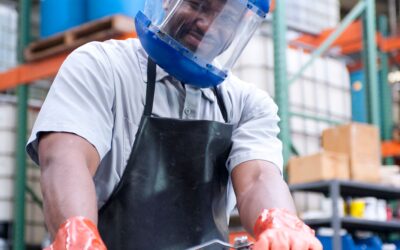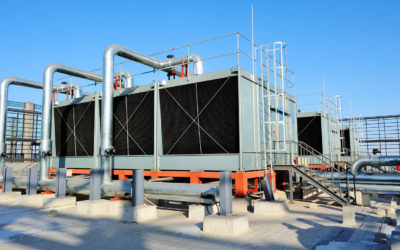In our next post in this series, we want to discuss causes of microbiological fouling. This type of fouling occurs when planktonic, or free floating bacteria, attach to surfaces throughout the cooling system. As they attach, the bacteria will form a slime barrier that is used to protect the bacteria and to enhance the ability to stay attached to the surface. This environment they produce also helps with growth of the bacteria as it is a stable surrounding that can provide the food and protection needed for the bacteria to flourish.
One of the side effects of this slime barrier is that it also is very efficient at capturing any solids such as dirt, debris, or corrosion products that may be present in the bulk water. The net effect then is that what started as a small area of bacteria can grow into a sizable area of foulants that can impact cooling performance.
Let’s look at 3 common causes of microbiological fouling.
POOR CONTROL OF BIOCIDE
Biocide feed needs to be consistent to properly control bacteria. Bacteria are constantly growing at exponential rates so consistency is required. Depending on the biological loading of a system, oxidizing biocides are typically fed anywhere from constantly maintaining a positive residual to daily or several feeds per week. Non-oxidizing biocides are typically fed once per week and best practices are to alternate the types of biocide fed so that the bacteria do not get resistant to the biocide.
INEFFECTIVE BIOCIDE
Some biocides are better at controlling some types of bacteria than others. The best example of this may be with systems that have a positive hit for sulfate reducing bacteria being present. These can be difficult to control and using a bioicide more targeted for this bacteria can be the difference between control and ongoing problems. Another example of this may be using the same non-oxidizer and not alternating as mentioned above. The primary biocide can become ineffective due to the bacteria becoming resistant over time to that biocides effects thus causing fouling.
HYDROCARBON CONTAMINATION
Hydrocarbon contamination is most commonly thought of happening in refineries and other hydrocarbon process units. However, a gearbox contains lube and a seal failure can cause severe hydrocarbon contamination, leading to fouling in even the smallest of cooling systems. Hydrocarbons, or oil for example, are very good sources of food for bacteria and also can be very difficult to remove from a cooling system if not treated quickly and properly (which may be a topic for another blog post later). As the bacteria grows in response to the oil leak, fouling can take place.
As you can see, microbiological fouling can be more common than we think as it is relatively easy to occur in most any cooling system. With attention to some simple, but very important details, bacteria can easily be controlled in any cooling system. When fouling does occur, and it will sometime over your career, the proper response can be the difference between success and failure for your treatment program.
NEED HELP PREVENTING FOULING IN YOUR SYSTEM?
Fouling can have serious reprucussions on the effeciency of your cooling system. If you need a plan for limiting fouling in your cooling system, contact a QualiChem Water Treatment Expert today.



